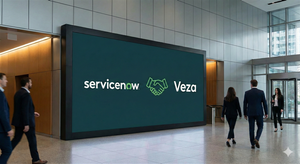NaaS Turns a Profit, but Challenges Loom in the EV Charging Race
NaaS Q3 Financial Results: Pioneering Profitability in the EV Era
China’s new energy vehicle (NEV) market is hitting its stride this year. Since July, monthly retail sales of NEV passenger cars have consistently outpaced gasoline cars, with NEVs’ penetration rates in total new vehicle sales exceeding 50% for four consecutive months. This signals a major turning point: NEVs are becoming the norm, while traditional gasoline cars are fading into the minority. For the charging services industry, this could mark the beginning of a new chapter in profitability.
NEVs Drive Charging Demand as Penetration Soars
As NEV adoption grows, their share of the national vehicle fleet has also risen. By mid-2024, NEVs made up 7.18% of all vehicles in China, according to data from Ministry of Public Security. This surge has spurred rapid growth in charging infrastructure. The National Energy Administration reported that by September 2024, China had 3.329 million public charging facilities, an increase of 603,000 in just nine months.
However, the growth in infrastructure has not fully addressed key challenges. Public charging facilities often suffer from inefficiencies in matching supply with demand, leading to low utilization rates. This not only affects consumers but also puts pressure on the profitability of charging station operators.
AI-powered solutions have emerged as a critical tool to tackle these challenges by optimizing supply-demand dynamics. AI-empowered companies with advanced data troves, like NaaS Technology Inc. (NASDAQ: NAAS), are really well-positioned. NaaS’s recently released Q3 2024 financial report offers valuable insights into this transformation.
I.Historic Opportunities as the NEV Market Expands
China’s NEV market is still in a period of explosive growth. According to the China Association of Automobile Manufacturers, NEV production surpassed 10 million units annually for the first time this year, making China the first country to achieve this milestone. Experts predict production could exceed 12 million units by year-end. Looking ahead, McKinsey estimates that by 2030, NEVs could account for nearly 70% of passenger car sales in China.
As NEVs become a household staple, the demand for charging infrastructure will continue to grow. Between January and September this year, electric vehicle charging volumes reached 66.67 billion kWh, up 12.4% year-on-year, according to the National Energy Administration.
Public charging stations are becoming increasingly essential, particularly in urban areas where installing private chargers is often impractical due to grid constraints, lack of fixed parking spaces, or resistance from property management. This contrasts with markets such as Europe, where private chargers dominate.
Recognizing the importance of public charging infrastructure, China has introduced a series of policies to accelerate its development. For example, a 2022 State Council guideline aims to establish a high-quality charging network by 2030. More recently, the 2024–2027 "Action Plan for Building a New Power System" was introduced to further support the sector. The government is fully backing the transformation.
These policies have significantly boosted public charging infrastructure, creating opportunities for charging operators to scale and commercialize. However, with an 8:1 ratio of NEVs to public chargers as of Q3 2024, the gap between supply and demand remains a key challenge but also a major opportunity.
II.NaaS Achieves Milestone: First "Quarterly Operating Profit"
NaaS reached a major milestone in Q3 2024, reporting its first-ever quarterly "operating profit":
- Charging service revenue: ¥42.37 million, up 36% year-on-year.
- Non-IFRS net profit: ¥20.6 million, with 73% of orders being profitable.
- Gross margin: 57%, a 19 percentage-point improvement from the previous quarter.
It seems NaaS’s strategic shift toward an asset-light platform model is working. By focusing on core charging platform services and phasing out lower-margin offline operations, the company has expanded its network while reducing costs. This has created economies of scale, strengthened its competitive edge, and improved profitability.
Central to this success seems to be what the company calls its proprietary NAAS Energy Fintech (NEF) system. This AI-driven platform optimizes site selection, revenue forecasting, operations, and maintenance for charging stations. By streamlining operations and improving user experience, the system has enhanced both station profitability and customer loyalty.
III.Building a Sustainable Ecosystem
NaaS co-founder and CEO Wang Yang, also known as Cathy, has compared the company to Meituan, China's Uber Eats. She believes that "Meituan solves dining needs and NaaS solves energy needs for cars. While Meituan connects consumers with local services, NaaS connects EV drivers with charging solutions.
As a platform business, NaaS benefits from scale. It's already connected 96,000 charging stations and 1.146 million chargers, representing over 45% of all public chargers in China. These impressive numbers allow NaaS to collect and leverage vast amounts of data, creating a feedback loop that improves operational efficiency and strengthens its competitiveness.
NaaS’s achievements have come at a time when its valuation remains at the lower end of the industry. As of November 27, the company’s price-to-sales ratio (P/S) is just 0.91x, compared to peers like Meituan (3.27x), Ctrip (6.10x), and Uber (3.59x). Still, with its proven profitability and strong growth trajectory, NaaS is well-positioned for a significant revaluation.
NaaS appears to be firmly at the forefront of an industry poised for rapid growth. With its innovative use of AI, a scalable digital platform business model, and a focus on profitability, the company is building a sustainable ecosystem that benefits all stakeholders—from EV drivers to charging station operators. As investor interest in China’s NEV market grows, companies like NaaS, which represent the future of the new economy, are likely to gain increasing recognition. The future looks bright for NaaS.
]]>Copyright 2024 ACN Newswire . All rights reserved.
More News
View More




Recent Quotes
View More
Quotes delayed at least 20 minutes.
By accessing this page, you agree to the Privacy Policy and Terms Of Service.